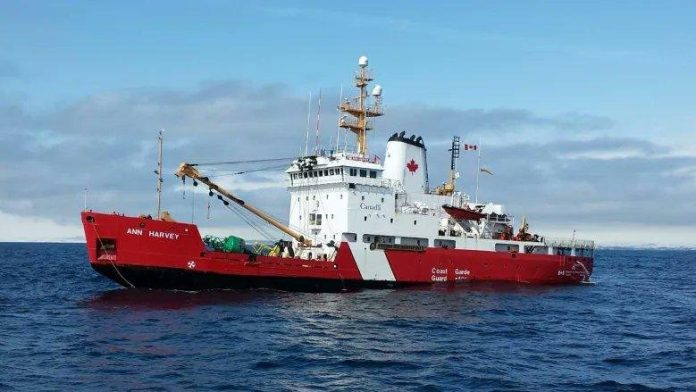
June 23 (UPI) — The U.S. Coast Guard and other officials are working to establish the timeline for the implosion of a submersible carrying five people to the Titanic wreck site deep underwater.
The sound of the implosion was captured by the U.S. Navy on Sunday around the time contact with the vessel was lost.
The ship that transported the Titan submersible to the Titanic site is expected to return to St. John’s, Canada, this weekend. Remotely operated vehicles are remaining at the scene of the Titanic wreck, near where it is believed the Titan imploded, killing all five on board.
Officials will continue to map out the Titan’s debris field two miles under the surface of the ocean.
U.S. Coast Guard Rear Adm. John Mauger said it will take time to determine a specific timeline but believes authorities will be able to glean more substantial information on what went wrong.
The U.S. Navy said late Thursday it had picked up “an anomaly consistent with an implosion or explosion” on Sunday near the time the submersible lost contact with its parent ship. The Navy picked up the sound because it relies on a secret network of underwater sensors to track other nations’ submarines.
The sensors’ data were combined with information from airborne Navy P-8 surveillance planes and sonar buoys on the surface to triangulate the approximate location of the Titan, a Navy official said. That information was given to the Coast Guard, Mauger said.
Onboard the Titan were Stockton Rush, CEO of Ocean Gate Expeditions, the company behind the mission; British billionaire Hamish Harding, the owner of Action Aviation; French dive expert Paul-Henri Nargeolet; and prominent British businessman Shahzada Dawood and his 19-year-old son, Suleman.
While the investigation continues, the calls for a pause on such undersea expeditions grew this week. Charles Haas, president of the Titanic International Society, joined others in saying such expeditions should receive a second look from regulators and lawmakers.
“It is time to consider seriously whether human trips to Titanic’s wreck should end in the name of safety, with relatively little remaining to be learned from or about the wreck,” Haas told NBC News.
“Intensive pre-service inspection of deep-sea submersibles should be required by international regulation. Just as Titanic taught the world safety lessons, so, too, should Titan’s loss.”
Experts also weighed in on how the implosion possibly happened. Armin Cate, a former commander of the U.S. Coast Guard Reserve and a retired special agent with Homeland Security, said an implosion at such a depth likely crushed the vessel like a soda can because of the tremendous water pressure at that depth.
“When you crush that tube in the middle, it’s like crushing a can of Coca-Cola, you might say,” Cate said. “The fact that they found the front cap and the back and different parts of the bottom and the middle tube no longer was connected to them tells me that’s what happened.
“And it appears to me that both the front and the rear cap were blown out about the same time. So, it was a catastrophic failure due to the outside pressure of the water … on the actual hull (or the canned part) of the submersible.”
Ofer Ketter told the New York Post that the accident likely happened in the blink of an eye, noting that the loss of communication at just shy of 10,000 feet meant that water pressure could have penetrated the tiniest of cracks in the submersible’s hull for an instantaneous failure.
“They never knew it happened,” said Ketter, co-founder of the private submersible company Sub-Merge. “Which is actually very positive in this very negative situation. It was instantaneous — before even their brain could even send a type of message to their body that they’re having pain.”






